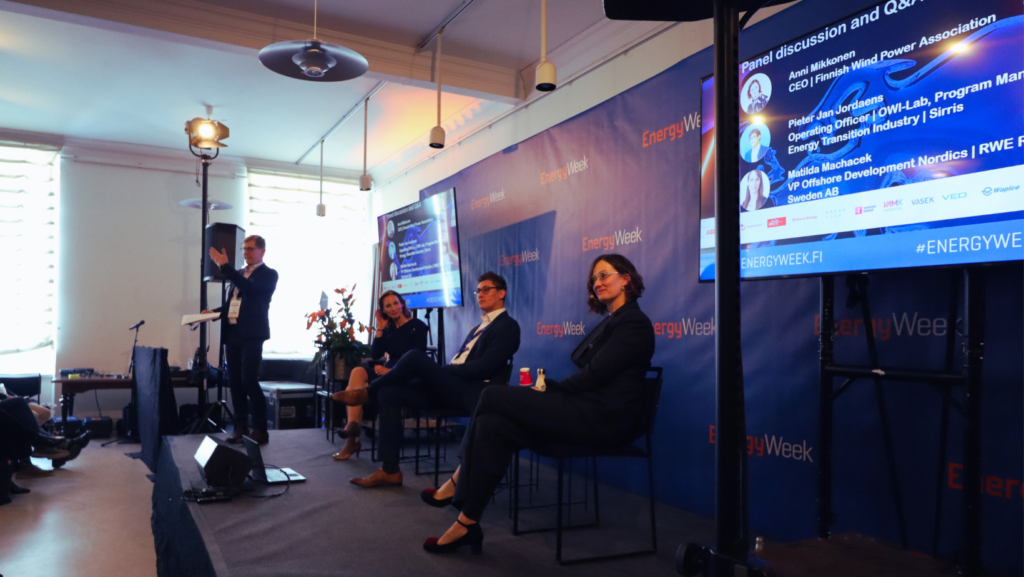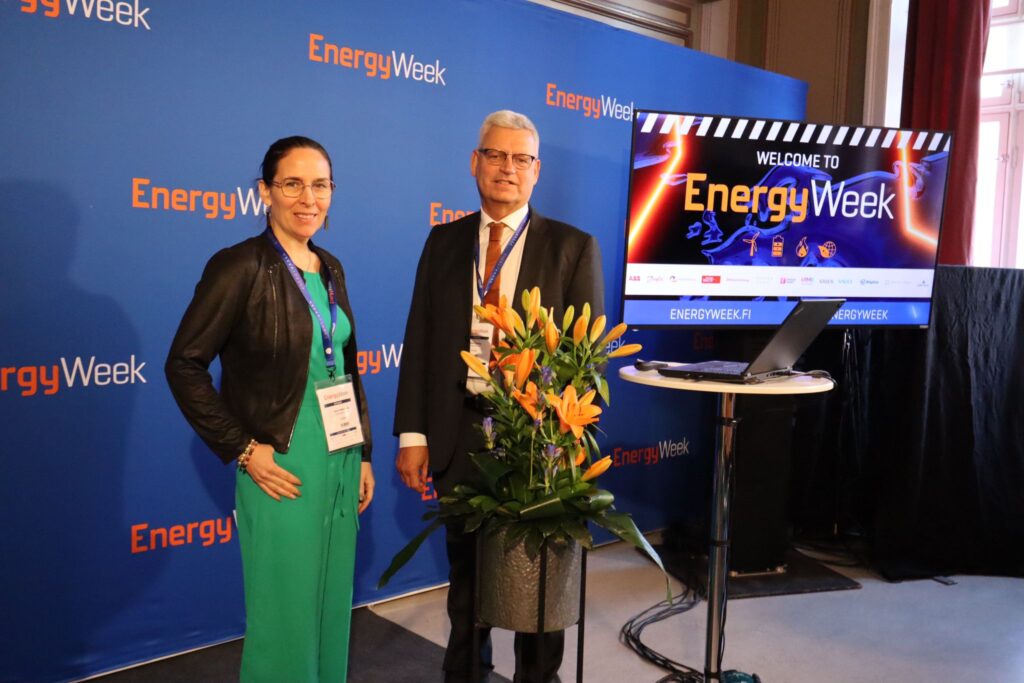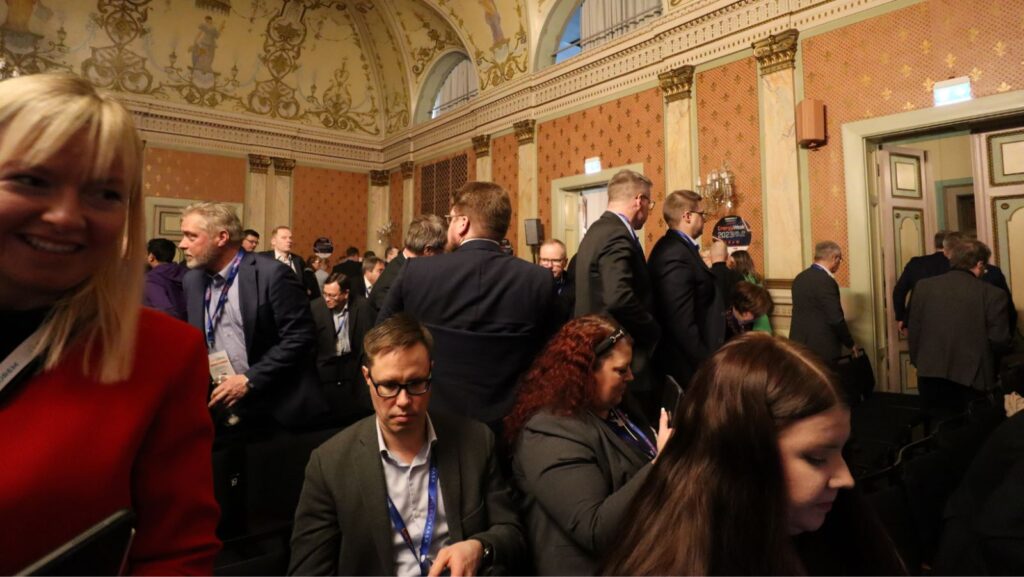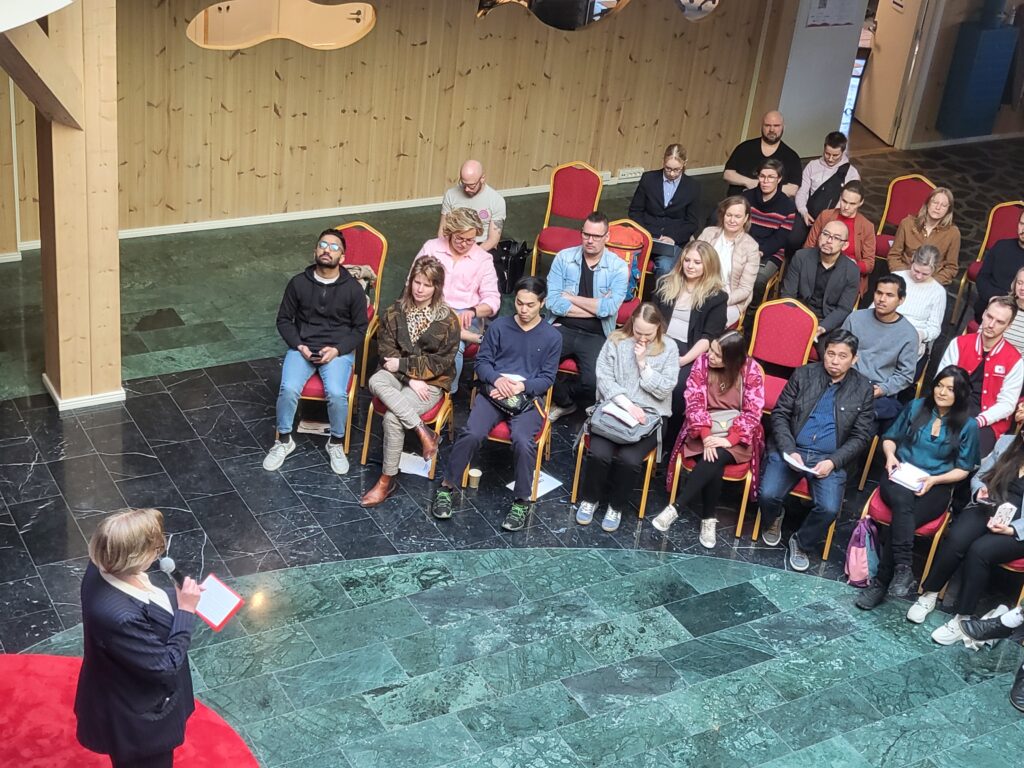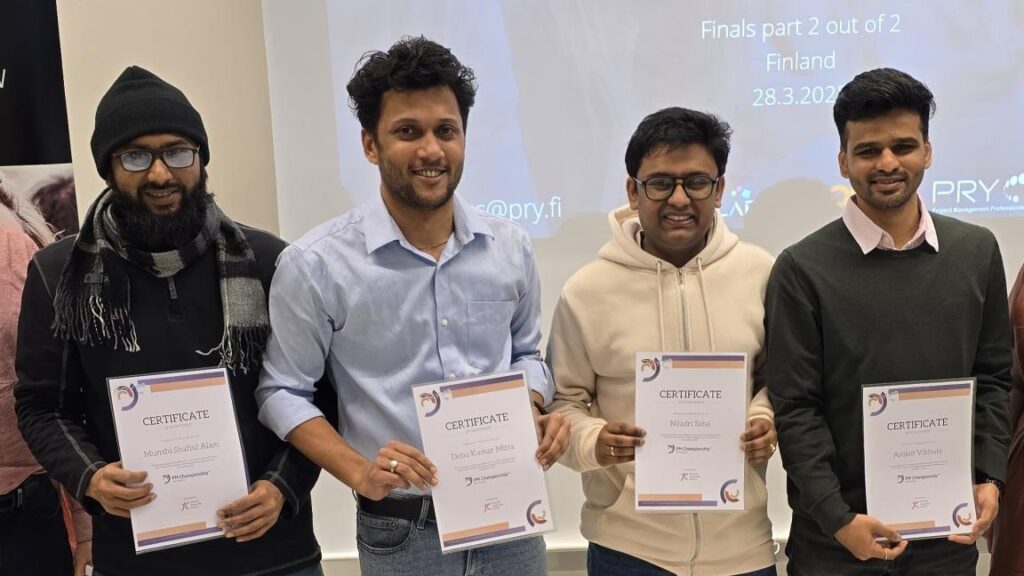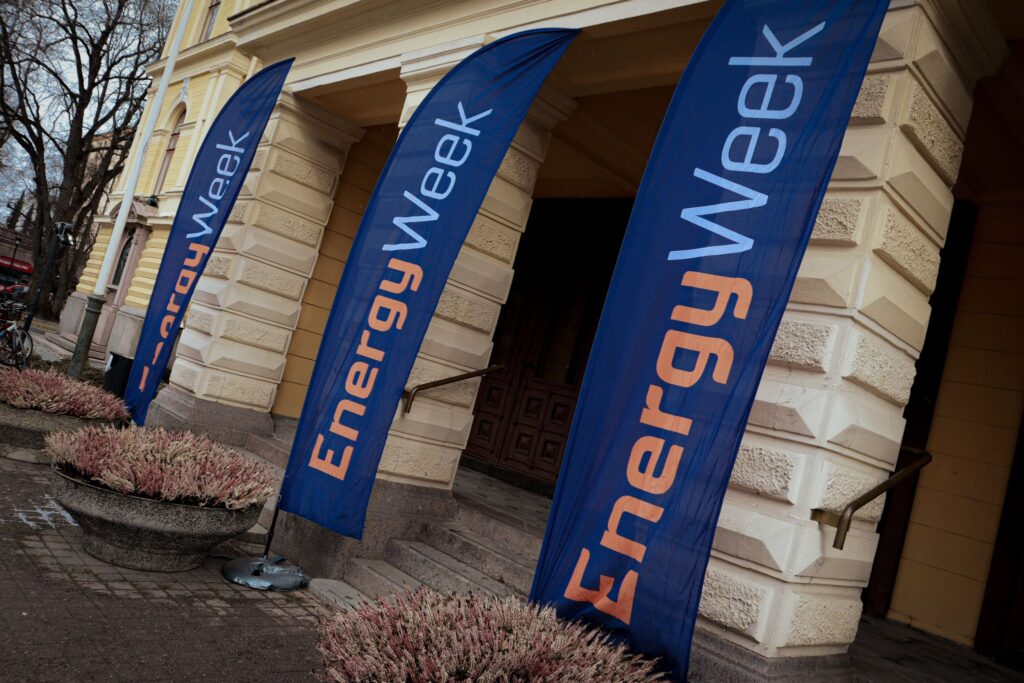Blockchain technology can power more than cryptocurrencies. An eye-opening seminar at Vaasa EnergyWeek showed that blockchains could also benefit the energy sector.
Tomi Salo, Project Coordinator in Digital Economy at the University of Vaasa, opened the Blockchain and Energy Technology seminar on Tuesday. Salo provided a nice and easy to understand introduction into the world of blockchains.
Ponder that we have a group of kids that like to build with Lego bricks. They want to build a really big castle together, but they love their own bricks and are afraid of losing them. So they came up with the idea to make a list including every brick, so they can keep track of ownership.
But who will manage the list? Perhaps the kids do not quite trust each other, so they ask their parents to do the work. But it’s a lot of work to manage this kind of list, so all the adults say no. The kids know that bankers and other experts also keep lists, so they ask if the experts could manage the system. The bankers say yes, but this solution turns out to be too expensive for the kids.
So the kids figure out that they should all make their own lists. They agree that they could only update their lists if half of the kids agree that it should be updated, for example if a new kid would like to join.
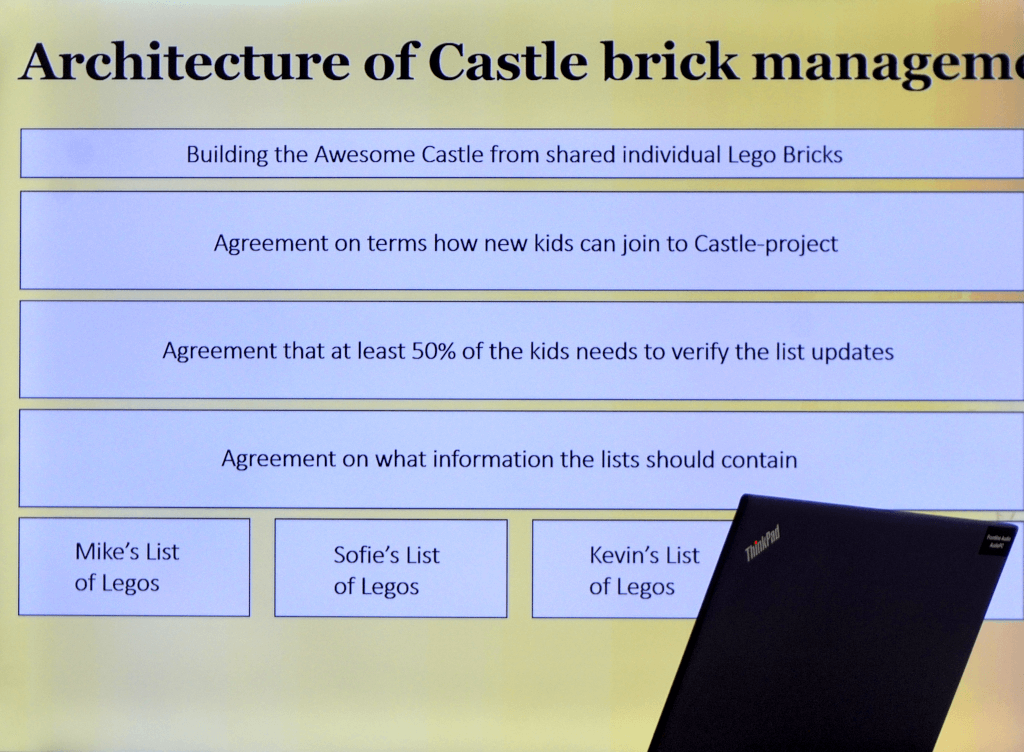
Because the kids have agreed that the lists are not secret, Laura decides to show her list to a friend, who is a very good Lego builder. This friend then gives some good suggestions about how to build the castle, which the kids implement, and a really nice castle is born.
So what has happened here? The kids first tried a centralised solution but did not succeed, so they went for a decentralised solution. It’s a lot of work to manually update the lists – but hey, it works – and fortunately, we adults have computers to do that for us. There are many types of different blockchains, cryptocurrencies are just one example.
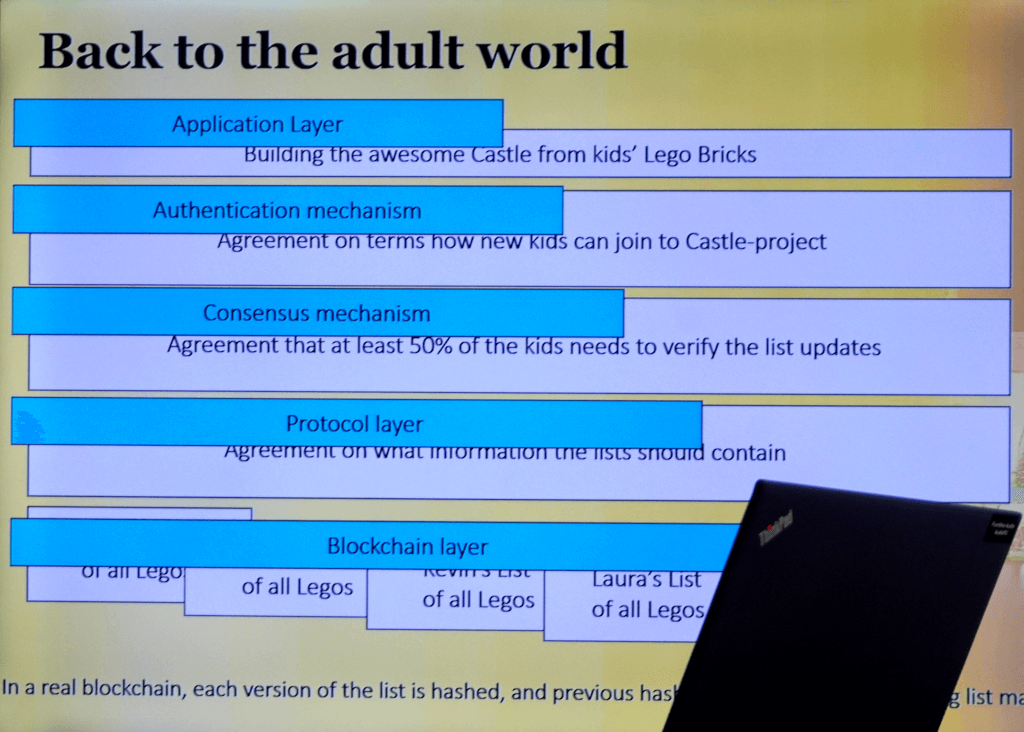
Helicopter view
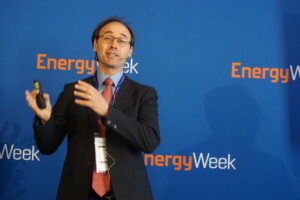
Contract Professor Gianluca Fulli continues the lecture where Tomi Salo stops. Professor Fulli, Deputy Head of a European Commission – JRC Unit, provides a helicopter view as well as insights.
Gianluca Fulli says that there are two main policies in this area, digital policies and energy policies, and that these are converging. He says that there is already a lot happening in energy blockchain, but mostly on a local level.
To take blockchain development to the next level, Fulli believes that frameworks, coordination and governance are needed and that customers need to be more involved. He concludes that there are differences within Europe concerning the maturity for blockchain technology.
“Cyprus, the UK, Estonia, France and Malta are leading the way. Finland is also well-positioned,” he says.
New technology takes time
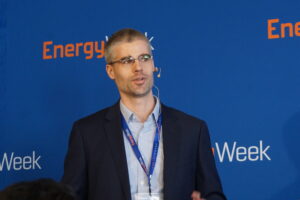
Mikko Tuomisto, Research Scientist at VTT, explains that blockchain technology was originated in 2008, when Satoshi Nakamoto published the now-famous white paper about Bitcoin. Mikko Tuomisto then describes several different projects in Finland, some dating back to 2016, when the energy sector first tested blockchain solutions.
“In 2016, the technology was advanced, but we were very far from real use cases,” he says.
A lot has happened since 2016. For example, later projects suggest blockchains provide real benefits within energy flexibility and distributed energy production.
Backbone of Web 3.0?
Today, blockchains can provide cybersecurity features on a high level combined with transparency, if needed. However, Mikko Tuomisto says that blockchains still divide opinions.
Some say that blockchains are not needed at all but others, including Tuomisto himself, think that blockchains are the future of the internet, one of the backbones of Web 3.0 – a new, more decentralised version of the World Wide Web.
“I believe that blockchains will eventually be a cheaper way to do things, so that is why they are coming,” Tuomisto says.
Can be scalable
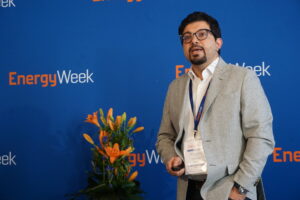
Blockchain technology has also been criticised for not being scalable enough. Associate Professor Miadreza Shafiekhah from the University of Vaasa does not agree with this criticism and says that the technology continues to evolve.
Blockchain 4 now has applications for industries, for smart cities and for energy. Blockchain 5, the next generation, will probably be all about artificial intelligence.



